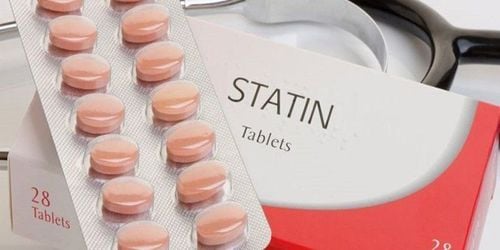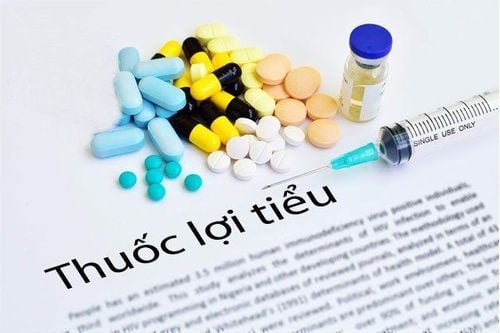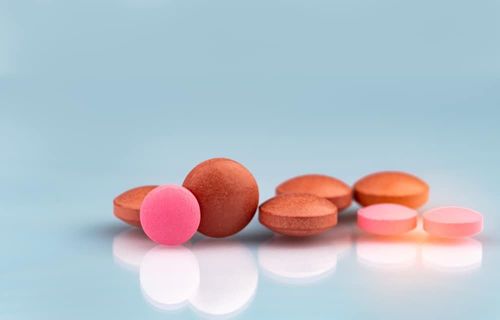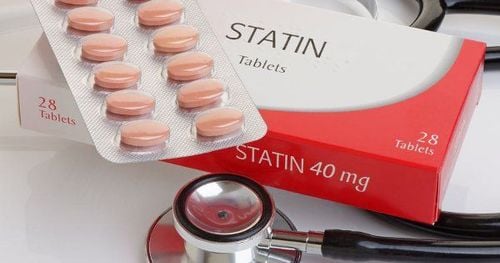This is an automatically translated article.
Czartan 25 is a diuretic drug with the main ingredient being Losartan Potassium 25mg. In this article, we will learn together about the uses of Czartan 25 as well as its dosage, usage and important notes.
1. What is Czartan?
Czartan 25 is a drug indicated for use in the treatment of high blood pressure.
Pharmaceutical name: Czartan 25. Drug class: Diuretics. Ingredients: Losartan Potassium 25mg and other active ingredients and excipients just enough. Preparation: Film-coated tablets. Packing: Packed in a box of 5 blisters x 10 tablets.
2. Uses of the drug Czartan 25
Czartan 25 is commonly indicated in the treatment of hypertension and helps reduce the risk of morbidity and mortality from cardiovascular diseases for hypertensive patients with left ventricular hypertrophy.
The drug works to reduce the risk of morbidity and mortality from cardiovascular diseases such as death from myocardial infarction, stroke, and cardiovascular disease in hypertensive patients with left ventricular hypertrophy.
The drug helps protect the kidneys for people with type 2 diabetes with proteinuria, thereby slowing the progression of kidney disease, helping to reduce the combined event rate of doubling the creatinine level in the blood. In addition, the drug may also appear in the prescription for the treatment of some other diseases as prescribed by the doctor.
3. Dosage and how to use Czartan 25
3.1. How to use The drug is used orally, used in accordance with the prescription of the treating doctor, can be used during or after meals. In particular, the dosage will be subject to individual and should be adjusted in response to blood pressure.
3.2. Dosage Specific dosage:
Initial and maintenance dosage for adults is usually 50mg per day. For patients taking diuretics or a history of liver dysfunction: 25mg per day. Losartan Potassium can be taken 1-2 times per day with a total dose ranging from 25-100mg. No dosage adjustment is required for patients under 75 years of age. Treatment data for older patients are limited. Therefore, treatment should be initiated at a dose of 25 mg/day in this group of patients. No dosage adjustment is necessary for patients with mild renal impairment (Clc; 20 - 50 ml/min), for patients with moderate to severe renal impairment (Clc; < 20 ml/min) or for patients on hemodialysis should be initiated. at a dose of 25mg/day. Losartan Potassium can be used together with other antihypertensive drugs. However, it should not be combined with potassium-sparing diuretics, as there is a risk of hyperkalemia.
3.3. Treatment of overdosage, missed dose Czartan 25 Overdose: Currently, data on overdose in patients are limited. Common manifestations of overdose are hypotension and tachycardia, sometimes bradycardia due to parasympathetic stimulation. Particularly in cases of hypotension, patients must receive supportive treatment. Neither Losartan Potassium nor its active metabolite can be removed via hemodialysis.
Missed dose : If a dose is missed during the course of taking the drug, the patient should take the supplement as soon as possible (usually 1-2 hours from the time ordered by the doctor). However, if it is almost time for the next dose to be remembered, the patient should skip the missed dose and take the next dose as directed by the doctor.
4. Note when using the drug Czartan 25
4.1. Contraindications Losartan Potassium is contraindicated in the following cases:
Patients with hypersensitivity to Losartan or to any of its ingredients. Contraindicated in combination with potassium-sparing diuretics. Do not use the drug in patients under 18 years of age, because the effectiveness and safety of Losartan Potassium have not been established in this age group. 4.2. Side effects During the use of Czartan 25 drugs may cause some unwanted side effects such as:
Causes hypotension, orthostatic hypotension, sinus bradycardia, tachycardia, chest pain, A-V block Grade II, blushing, facial edema. Dizziness, anxiety, insomnia, ataxia, depression, confusion, headache, migraine, dizziness, sleep disturbance, fever. Occurrence of gout, increased or decreased blood K. Abdominal pain, diarrhea, indigestion, flatulence, constipation, nausea, vomiting, loss of taste, intestinal spasms, gastritis. Leg pain, back pain, paresthesia, tremor, myalgia, bone pain, muscle weakness, fibromyalgia, joint edema. Causes low hemoglobin and hematocrit, agranulocytosis, leukopenia, thrombocytopenia, hemolytic anemia, aplastic anemia. Increases or lowers blood uric acid (high doses) slightly increases creatinine/urea, urinary tract infections. Nasal swelling, sinusitis, cough, bronchitis, shortness of breath, rhinitis, throat discomfort, airway swelling, nosebleeds. Causes hair loss, dry skin, erythema, dermatitis, itching, hives, appearance of bruises, rash, photosensitivity. Feeling of impotence, decreased sex drive, nocturia, polyuria, interstitial nephritis, kidney failure. Slight increase in liver function test/bilirubin, pancreatitis, hepatitis, intrahepatic cholestatic jaundice. Blurred vision, decreased vision, burning and pain in the eyes, conjunctivitis. Sweating, tinnitus. Causes hyperlipidemia (high dose), increased blood glucose. Causes hypomagnesaemia, hypophosphataemia, hypercalcemia, hypochloremic alkalosis. For the most part, side effects usually disappear over time after discontinuation of the drug. However, if the abnormal symptoms persist and are more serious, the patient should immediately contact the doctor for a suitable solution.
4.3. Drug Interactions In clinical pharmacokinetic studies, there were no clinically significant drug interactions between losartan and the following drugs: Phenobarbital, ketoconazole, hydrochlorothiazide, digoxin, cimetidine erythromycin and warfarin. It has been reported that fluconazole and rifampin have the ability to reduce levels of active metabolites. However, the clinical significance of these interactions has not been fully evaluated.
Similar to other drugs in the class of angiotensin II blockers or substances with a similar effect. When used in combination with potassium-sparing diuretics, potassium-sparing potassium-containing salt substitutes have the potential to cause increased serum potassium. In addition, limit the use of drugs with foods such as alcohol, tobacco, carbonated drinks, soft drinks... because they contain active ingredients capable of causing antagonism or synergism with medicine.
4.4. Precautions for use When taking the drug, special monitoring or dose reduction is required in patients on diuretic therapy, dehydration and other factors causing hypotension. Patients with unilateral or bilateral renal artery stenosis, who have only 1 kidney left, also have a high risk of adverse events and also need to be monitored during treatment. Use with caution in patients with a history of renal or hepatic impairment and should be used in lower doses. Above is all information about the use of Czartan 25 as well as instructions for use, dosage and important notes. However, the article is for reference only, patients should use it exactly as prescribed by doctors and pharmacists to ensure effectiveness and safety.
Please dial HOTLINE for more information or register for an appointment HERE. Download MyVinmec app to make appointments faster and to manage your bookings easily.













